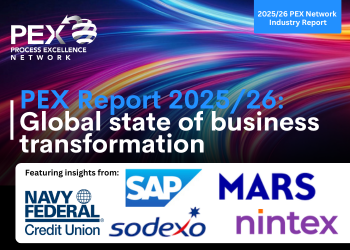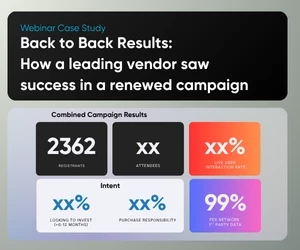From process excellence to human-centered transformation
In the AI transformation era, process excellence must coexist with creativity, agility, and empathy
Add bookmark
Process excellence has long been defined by optimization reducing cost, waste, and variation. However, in the artificial intelligence (AI) era, process discipline must coexist with creativity, agility, and empathy.
The next frontier is human-centered excellence: combining operational rigor with ethical design and adaptive intelligence. Process leaders must now think like behavioral architects.
They must ask:
- How does this process learn?
- How does it reflect our values?
- How does it evolve responsibly?
Take the case of a global insurance provider digitizing claims adjudication. The first automation wave improved speed but triggered customer dissatisfaction when opaque algorithms denied claims. Leadership intervened, establishing an “AI fairness review” led jointly by operations and compliance. The initiative restored customer trust while maintaining efficiency gains.
This illustrates a universal truth: process excellence is no longer mechanical; it is moral.
Join the PEX Network community

Don't miss any news, updates or insider tips from PEX Network by getting them delivered to your inbox. Sign up to our newsletter and join our community of experts.
Learn MoreCulture as the multiplier
AI transformation tests not only systems but also organizational culture. When accountability is unclear, failures cascade silently. When accountability is shared, learning compounds.
At a global consumer goods company, leadership introduced “decision ownership maps” that linked every AI output to a named business owner. This simple practice reduced blame culture and accelerated adoption.
At another enterprise, quarterly “model retrospectives” replaced technical post-mortems with open discussions about unintended outcomes and data quality. The shift from secrecy to shared learning built stronger relationships between data teams and executives.
These organizations recognized that culture, not technology, is the multiplier of trust. Culture is the unseen operating system of transformation. To sustain AI adoption, leaders must embed clarity rituals – small, repeatable actions that normalize transparency. Examples include:
- Starting leadership meetings with a one-minute “model status” update.
- Rotating non-technical executives through AI risk sessions.
- Sharing short internal case stories about both AI successes and ethical challenges.
Over time, these micro-behaviors form the habits of a responsible digital enterprise.
Register for All Access: AI in PEX 2026!
Three leadership behaviors that drive intelligent transformation
From global experience across multiple transformation programs, three leadership behaviors consistently separate AI leaders from laggards.
1. Curiosity before control
High-performing leaders replace fear of the unknown with structured curiosity. They treat every AI outcome, accurate or flawed, as a learning opportunity. This mindset accelerates organizational intelligence by turning mistakes into data.
2. Transparency by default
Transparent leaders make AI decisions visible. They share how models are trained, validated, and monitored. This openness reduces internal friction and external skepticism. Transparency also drives speed as when people understand the system, they are more likely to trust and use it.
3. Empathy-driven accountability
AI outcomes affect people directly. Empathy keeps organizations grounded in purpose. Leaders who balance compassion with discipline build resilient teams and sustainable ethics.
Together, these behaviors form the Human-Centered AI Leadership Model to innovate responsibly, transparency to earn trust, and empathy to lead ethically.
Join us at All Access: AI in PEX APAC 2026!
Cross-industry leadership lessons
Around the world, forward-thinking enterprises are institutionalizing these behaviors.
- A European energy company integrated AI ethics into its executive development curriculum, teaching managers how to evaluate algorithmic decisions as part of their leadership competency.
- A US hospital system established “AI rounds” where clinicians, data scientists, and executives jointly reviewed model outputs. This reduced bias incidents and improved staff confidence.
- A global logistics firm launched explainability dashboards designed not for regulators but for frontline operators transforming compliance tools into engagement assets.
Each example proves that technology maturity follows leadership maturity. Governance frameworks succeed only when leaders make them a lived reality.
From automation to autonomy: Leading with digital integrity
The enterprise of the future will be autonomous, self-learning, adaptive, and data driven. However, autonomy without integrity becomes chaos. Leaders must now manage not just performance but principles. They must ensure that intelligent systems enhance human judgment rather than replace it.
Digital integrity is the new leadership mandate. It combines governance, ethics, and empathy into a measurable capability. In the coming decade, the most valuable executive skill will not be technical literacy, it will be trust literacy. CIOs and CDOs who can explain how and why AI decisions are made will hold more influence than those who merely deploy tools.
This shift mirrors how cybersecurity evolved: once a technical function, now a board-level discipline. AI governance is following the same path and leadership behavior will determine who thrives in that transition.
A framework for leading the intelligent enterprise
Based on global transformation experience, an effective leadership model for AI-driven organizations includes four foundational practices:
- Purpose alignment: Every digital initiative must map back to a clearly stated business and ethical purpose. This anchors AI in strategy, not experimentation.
- Behavioral reinforcement: Reinforce desired behaviors such as transparency, accountability, and learning through incentives and recognition. Governance without reinforcement is theater.
- Cross-functional literacy: Equip non-technical leaders with enough AI understanding to ask the right questions. Literacy builds confidence, which builds adoption.
- Feedback architecture: Create structured loops between humans and machine data. This symbiosis is the essence of the intelligent enterprise.
Enterprises that embed these four practices achieve more than automation, they build systems that think, adapt, and behave responsibly.
The new mandate for the c-suite
As organizations accelerate toward AI-enabled operations, the question shifts from “How fast can we automate?” to “What kind of intelligence are we creating?” C-suite leaders are now custodians of both efficiency and ethics. Their decisions determine whether AI augments human judgment or undermines it. The future boardroom will measure two KPIs with equal weight: return on investment and return on integrity.
Leaders who understand this dual mandate and balance digital speed with human sensibility will define the next generation of enterprise performance.
Register for All Access: AI in Business Transformation 2026!
The future of AI transformation is human
Technology is evolving faster than governance frameworks can adapt. Yet the organizations that succeed are those that recognize one immutable truth: leadership behavior is the ultimate algorithm.
AI transformation will not reward the fastest implementers; it will reward the most responsible leaders. Digital excellence is no longer about process optimization. It is about human optimization, the ability to align intelligence, human and artificial, around shared purpose and ethical design.
As enterprises move from automation to autonomy, leaders must evolve from managing outputs to managing trust, from enforcing compliance to inspiring confidence.
Those who master the human side of AI will not just transform processes, they will redefine what responsible leadership looks like in the intelligent enterprise.
PEX Report 2025/26: Global state of business transformation

The PEX Report 2025/26 examines the results of our annual survey of more than 200 professionals with insights from more than a dozen industry business and thought leaders from across the globe. Contributors include leaders from Mars, Navy Federal Credit Union, Pacific International Lines, Sodexo, SAP and Nintex!
Explore why true business transformation is not a singular project but an ongoing journey, one that requires visionary leadership, cross-functional collaboration, technological prowess and an unrelenting commitment to agility and innovation. Those that embrace this evolution holistically are not just surviving the future, they are shaping it!
Download Now












